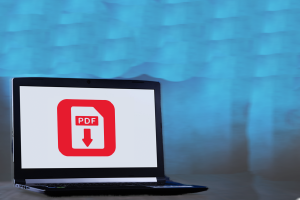What does accessibility mean?
Accessibility is making things universally usable for every person. This can mean your physical space, and it can mean your digital space. Physical accessibility includes things like ramps and elevators and the size and spacing of your doorways, hallways, and offices. Making your physical space usable for every person, regardless of their mobility, makes your space inclusive and accessible. Making your digital content usable for every person, regardless of their abilities or disabilities, means it is accessible. This is the basis of digital accessibility.
What is digital accessibility?
Digital accessibility includes making sure all content, visual or auditory, or cognitively, can be used by everyone. It means taking into consideration that not everyone can hear or see. Or that not everyone has the same mobility or reaction time. It acknowledges that not everyone has the same cognitive ability.
How is digital accessibility achieved?
There are a number of common elements that digital accessibility will include. Much of digital accessibility includes offering alternative formats to access content. Closed captions for audio and video content is one. Text alternatives (alt-text) descriptions for images or graphics (like charts, graphs, or diagrams) are another. Using simple language and simple procedures for functionality in web or mobile apps is yet one more. It also includes making your pages and applications easily navigable, whether the user is operating a mouse or keyboard or another navigation tool.
PDFs must be accessible too
 Digital accessibility requires that all file content be accessible as well as your web pages or applications. If you are using PDF files on your website, within your organization, or within mobile or web applications, these must also be usable for everyone.
Digital accessibility requires that all file content be accessible as well as your web pages or applications. If you are using PDF files on your website, within your organization, or within mobile or web applications, these must also be usable for everyone.
PDF accessibility includes adding functionality that works for people with disabilities, including those who use screen readers or connected Braille displays to read the PDFs. Many of the same rules of making a website accessible also apply to PDFs. These rules specifically require captioning for embedded audio or video, as well as alt-text for images and graphics, and navigation functionality such as headings and links. Additionally, content such as lists or tables requires digital tagging that supplies additional information to people who use assistive technology such as screen readers (that read the content aloud), or who use a connected Braille display.
Blind or low vision users must be able to understand the relationship between lists and their items and various list levels. Additionally, they must be given information about table rows and columns so they can understand how the data in each cell is related. This information is provided by applying digital tags to these elements. Furthermore, all content must be in understandable language so that it can be grasped by all users no matter their cognitive ability.
Why make PDFs accessible?
Often it is the “need to know” content that is stored in PDF format. Meeting minutes, product catalogs, owner’s manuals, and other important information. The stuff users “need to know.” Denying a customer access to an owner’s manual, a student access to course syllabi or a member of the public access to government meeting minutes is discrimination. PDFs need to be accessible for people using assistive technology because they NEED access to this content, but also it’s the law under the Americans with Disabilities Act (ADA). Failure to achieve ADA compliance on your website or with your PDF documents can result in expensive and embarrassing lawsuits.
Find the right tool
PDF accessibility means that your PDF documents are readable and usable for every person in your target audience, including those who use assistive technology. You’ll need to remediate your PDFs to make them accessible. There are a number of tools available for PDF remediation. Learn what is required, choose the right tool, and get accessible.
Check out these helpful articles:
PDF Remediation: In-House or Outsource?
Evaluating Tools for Professional PDF Remediators
If you want help with PDF accessibility, we’re here for you.
The post What is PDF Accessibility? appeared first on Equidox.




